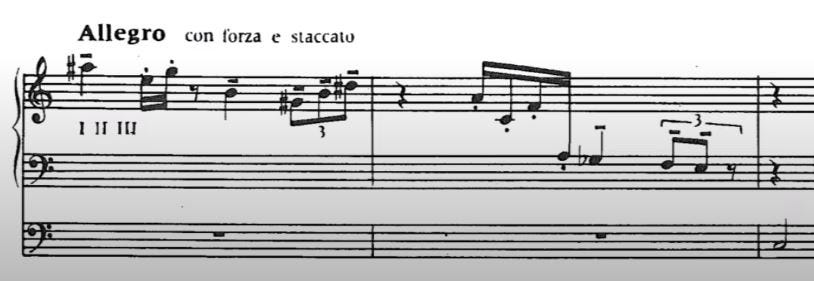Six 'interesting' 20th Century toccatas
Playing a toccata as a voluntary is (or should be) a win-win-win for the organist, the congregation (or audience) and the organ itself. The unique ability of the organ to provide a vivacious and constantly changing harmonic embellishment to a theme presented in the pedals has given rise to countless toccatas. As both a composer and an organist there is also an important challenge in being able to build a controlled increase in complexity and volume. For the record, the arrival of the Widor Toccata on the scene was the result of a suggestion of Francis Jackson for the music at the wedding of Prince Edward, Duke of Kent, to Katharine Worsley at York Minster in 1961.
I’ve selected a half-dozen interesting toccatas that may be much less familiar than the Widor but which are all brilliant display pieces by virtuoso organists. They are listed below in alphabetical order of composer. All six demonstrate well the controlled transition from an arresting introduction through a development section to a thrilling conclusion. The link between the four French composers is that they were all pupils of both Dupré and Duruflé.
In 1957 Pierre Cochereau (1924-1984) gave a recital in Boston MA at which he improvised a four-movement symphony with a Toccata as the final movement. This has been transcribed by Jeremy Filsell, now at St. Thomas, New York. There is a very good analysis of the symphony in the biography of Cochereau written by Anthony Hammond highlighting elements of style that Cochereau used and developed in the course of his career.
The sound quality of the audio recording is not brilliant. It is well worth watching Marko Sever play the Toccata on the organ of St. Alban’s Cathedral. The video and audio quality is excellent, as is the performer’s management of the organ.
André Fleury (1903-1995) wrote a substantial amount of music for the organ, most of it technically very challenging. In 1932 he published Prelude, Andante and Toccata. A feature of the Toccata is the way in which the hands share out the manual ostinato. If you survive to reach the concluding bars you still have a nightmare of a pedal cadenza/coda to tackle!
Jean Guillou (1930-2019) developed a radical style of composition, of which the Toccata, published in 1963, is an excellent example. Guillou was the titular organist at St Eustache from 1963 until 2015 and this audio recording demonstrates both the organ and Guillou’s phenomenal technique. The opening motif (see above) is treated in a number of different ways before its transformation into a more conventional toccata-style conclusion.
Joseph Jongen (1873-1953) entered the Liège Conservatoire at the age of seven! The list of his opus numbers reaches 241 but he destroyed many of them and few have been published. John Scott Whitely has written a book and many articles on Jongen. There are many recordings of the Toccata but I have chosen one by László Deák on the organ of the Franciscan Church of Budapest. The organ has an intriguing console design, including manual keys in two different shades of brown. Note also the way in which the organist has the music running the entire width of the music desk and beyond!
Aivars Kalejs (1951) is a distinguished Latvian composer and organist. His Tokata par Koralo “Gods Dievam augstiba” (Gloria in excelsis Deo) is based on a chorale-based improvisation that he reworked slightly for publication. The main challenge for the performer is to be able to play groups of five semiquavers in the right hand against four in the left! Towards the end of the toccata the chorale theme is presented in a canon between the manuals and pedals. There are many recordings, many on the Walcker (renovated by Flentrop) organ in Riga Cathedral. The IV/124 organ has mechanical action. As this video shows, assistance is required to manage the registration changes! The 5 against 4 challenge is well worth working on as the piece is very satisfying to play.
Marcel Lanqetuit (1894-1985) was born in Rouen and initially had lessons from Albert Dupré before becoming a prize-winning pupil of Eugène Gigout and Marcel Dupré. His Toccata is dedicated to Albert Dupré. The primary key is D major but there is a fascinating central section which moves from B major, C major, F# major, back into B major and finally into D major. I love playing it but have never really coped well with the octave hand shifts in bars 5 and 6. One day! The Toccata was popularized by Jane Parker-Smith and I have chosen her audio performance which shows the score on the screen.



